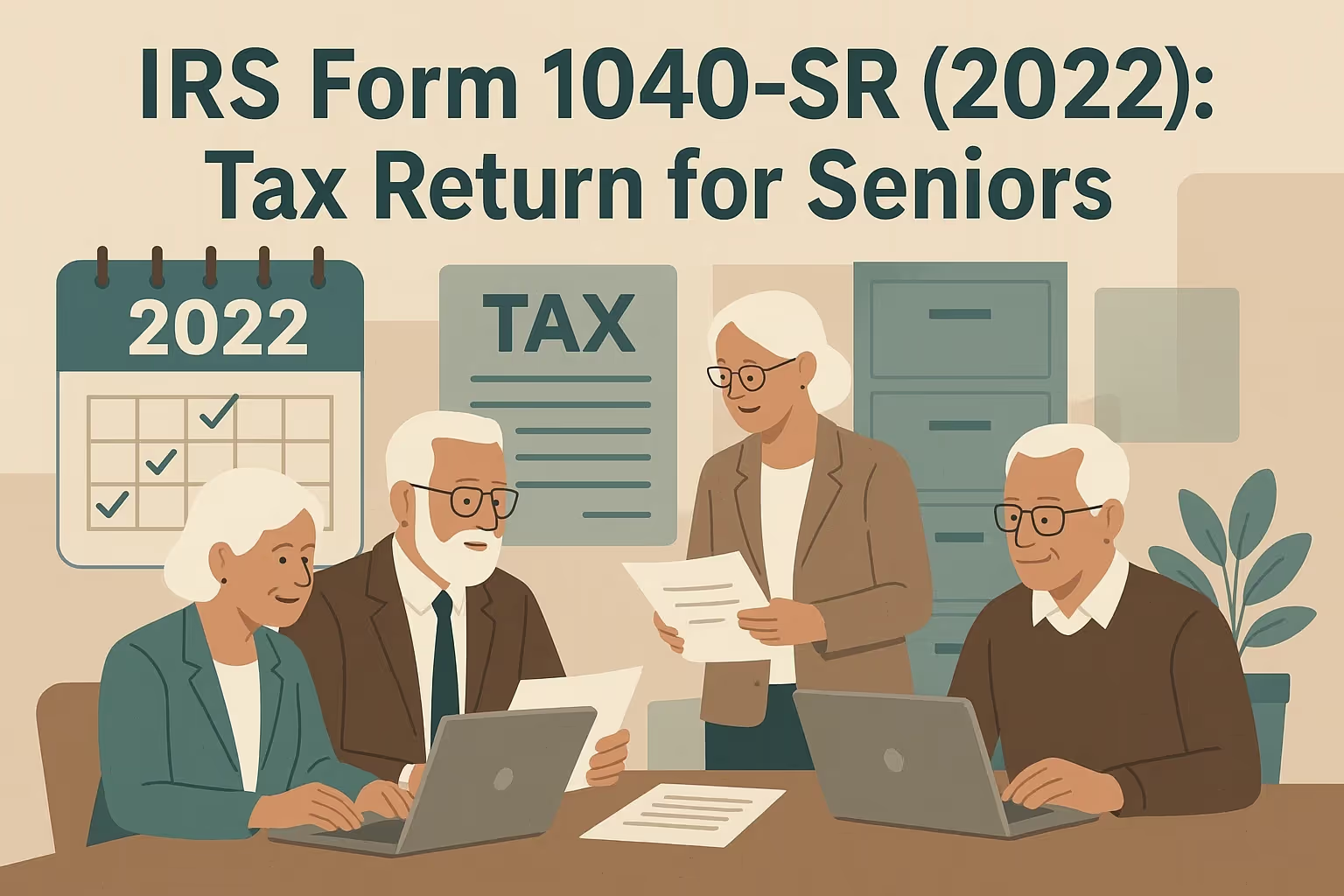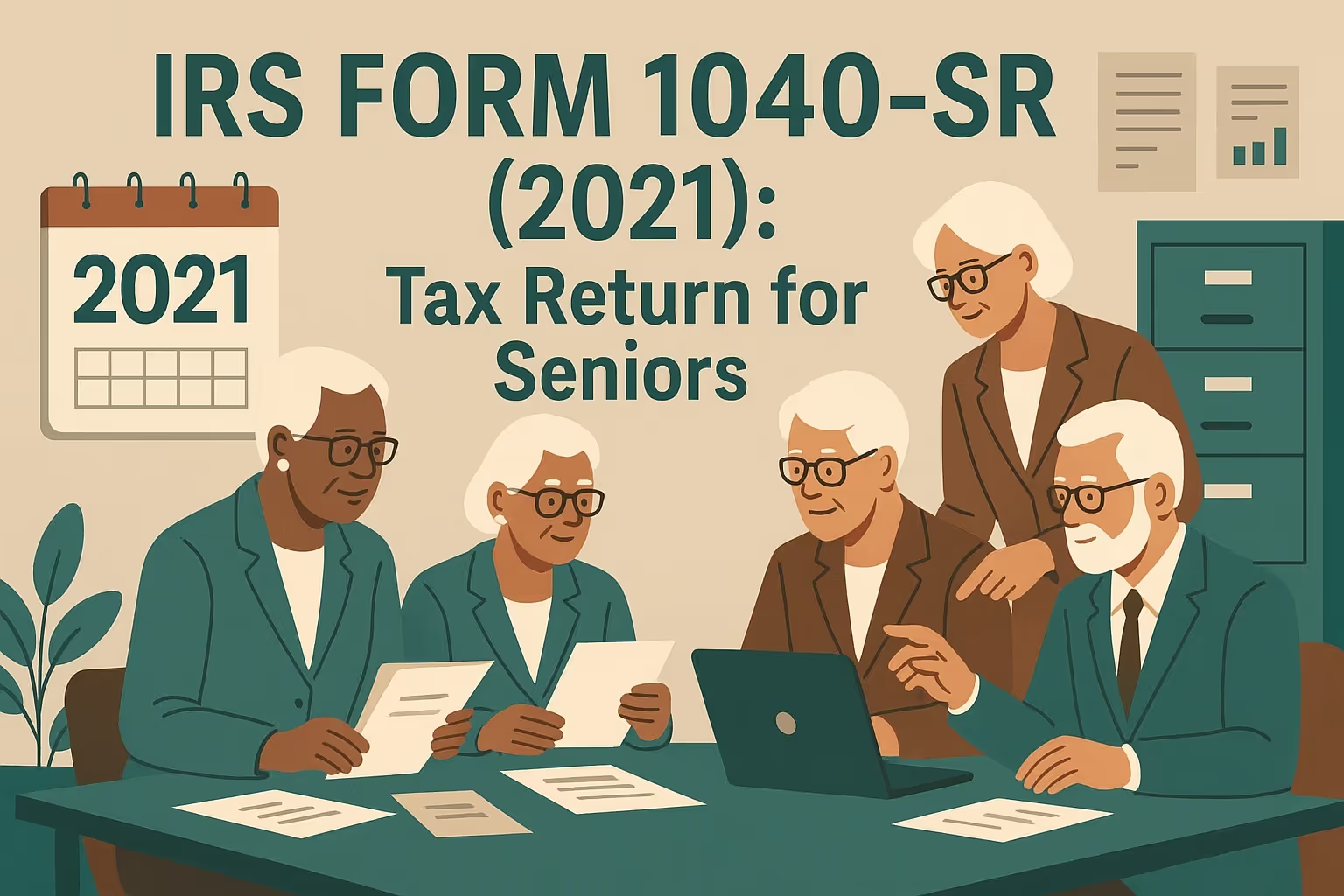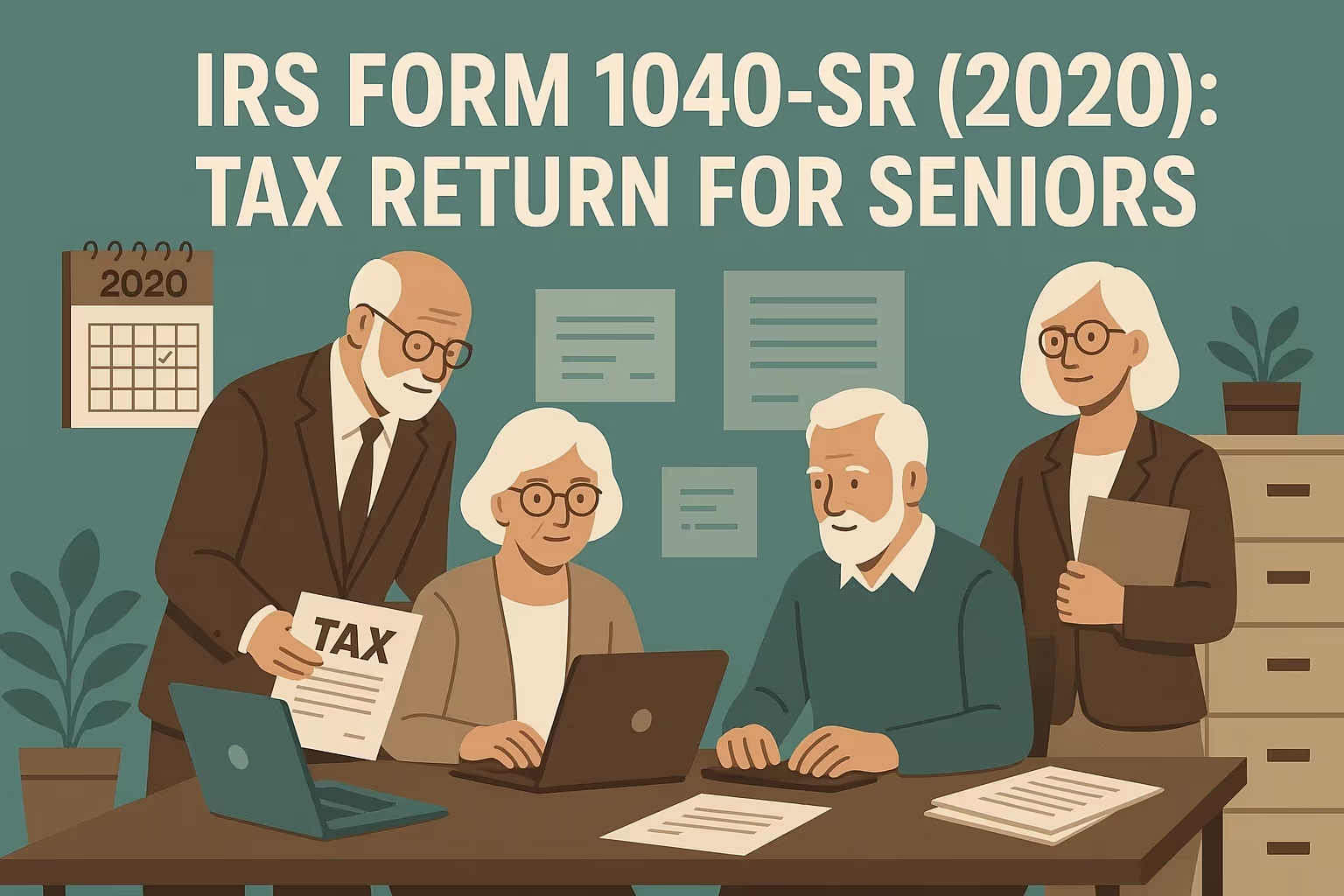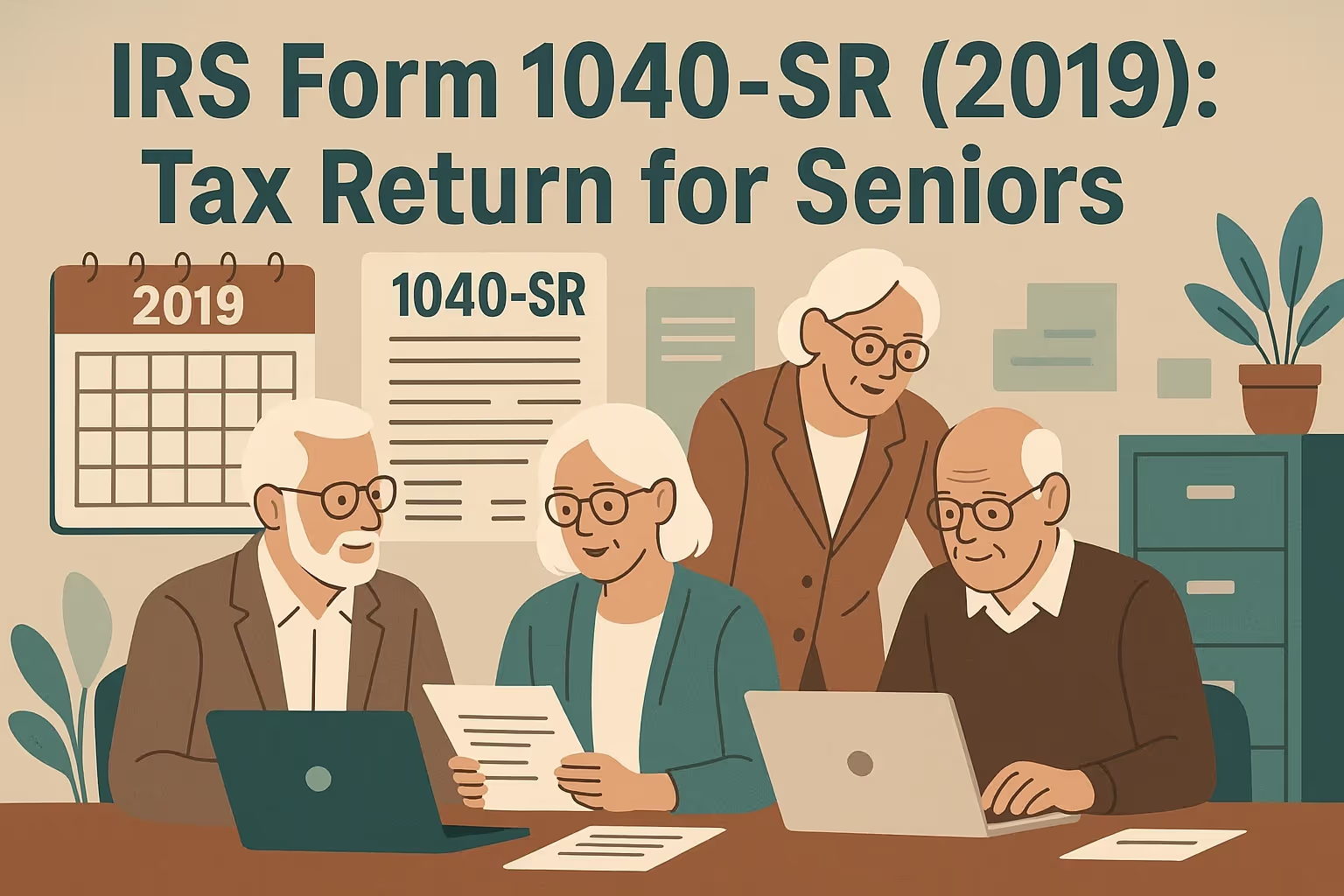Form 1040SR 2013 Instructions: Essential Tax Filing Guide
Form 1040 is the federal individual income tax return that taxpayers use to report their income, claim deductions and credits, and calculate their overall tax liability. For the 2013 tax year, every taxpayer, including senior taxpayers aged 65 and older, must use this form since Form 1040SR did not yet exist. While later initiatives such as the Seniors Tax Simplification Act eventually led to easier filing options, in 2013, seniors prepared and filed their returns using the same process as all other taxpayers.
Senior filers often face unique circumstances, such as Social Security benefits, pensions, annuities, and other income sources that must be reported accurately. Determining gross income, adjusting, and calculating adjusted gross income are critical steps before applying deductions or credits. For many seniors, the higher standard deduction available after age 65, medical expense rules, and notable credits helped lower overall income taxes. Understanding these provisions ensures taxpayers do not miss out on valuable benefits while meeting their filing responsibilities.
This guide explains how to file Form 1040 for the 2013 tax year clearly and step-by-step. It covers who must file, filing status options, key tax law changes, schedules, payment options, and common mistakes to avoid. By following the instructions, seniors can confidently prepare and file their tax returns, reduce errors, and ensure compliance with IRS requirements.
Understanding Form 1040 for the 2013 Tax Year
Form 1040 served as the standard individual income tax return for taxpayers in 2013. Every taxpayer, including senior taxpayers, used this form to report income, calculate tax liability, and claim deductions or credits. Unlike in the later years, there was no simplified option such as Form 1040SR, so seniors followed the exact instructions and filing process as all other taxpayers.
Who Must File in 2013
The Internal Revenue Service required taxpayers to file based on filing status, age, and gross income. According to the 2013 guidelines:
- A single taxpayer under age 65 must file if gross income was at least $10,000. For those age 65 or older, the threshold increased to $11,500, reflecting the additional standard deduction available to seniors.
- A head of household must file if gross income reaches $12,850 when under age 65 or $14,350 if age 65 or older. This higher threshold recognizes the larger standard deduction for supporting dependents.
- Married couples filing jointly had to file if their combined income was $20,000 when both spouses were under 65. If one spouse was 65 or older, the threshold increased to $21,200; if both were 65 or older, it rose to $22,400.
- A married taxpayer filing separately had to file a return if gross income was at least $3,900, regardless of age. This lower threshold reflected the more limited deductions available under this status.
- A qualifying widow or widower with a dependent child must file if their income reaches $16,100 when the child is under 65 or $17,300 if the child is 65 or older. These limits apply for the two years following a spouse's death.
These thresholds ensured that taxpayers with sufficient income contributed to federal income taxes while providing seniors with higher limits that accounted for age-based deductions.
Example Scenario
A 67-year-old single senior who received $12,000 in combined wages and Social Security benefits had to file because the income exceeded the $11,500 threshold for that age group. These filing limits ensured that all taxpayers with sufficient income met their obligations. At the same time, seniors who understood the thresholds could avoid missed filings, prevent penalties, and take advantage of benefits such as the additional standard deduction available after age 65.
Important Tax Changes in 2013 Seniors Should Know
Several tax law changes were applied in 2013, and many seniors needed to understand how these rules affected their individual income tax returns.
- New top tax rate: A 39.6 percent rate applies to high-income taxpayers. Although most senior taxpayers did not fall into this bracket, the change influenced tax planning for some retirees with significant capital gains or retirement distributions.
- Medical and dental expenses: Taxpayers under 65 could only deduct expenses exceeding 10 percent of adjusted gross income. Seniors 65 and older retained the lower 7.5 percent threshold, giving them a vital deduction advantage.
- Additional Medicare Tax: An extra 0.9 percent Medicare tax is applied to wages and self-employment income above $200,000 for single taxpayers or $250,000 for jointly married filing. Seniors with higher earnings need to account for this when calculating taxes.
- Same-sex marriage recognition: Legally married same-sex couples were required to use married filing jointly or separately for federal purposes, regardless of state law.
- Personal exemption: The amount increased to $3,900 for 2013 but was subject to phase-outs for higher incomes.
These updates demonstrate how the tax year introduced both new challenges and benefits. Understanding these adjustments ensured that many seniors claimed the correct deductions and complied with filing rules.
Step-by-Step Filing Guide for Seniors
Completing IRS Form 1040 for the 2013 tax year required careful attention to detail. The following steps provide senior taxpayers a clear path to filing their income tax returns.
Step 1: Gather Documents.
Seniors needed to collect Social Security statements (SSA-1099), retirement distribution forms (1099-R), and wage statements (W-2). Additional documents, such as bank statements showing interest (1099-INT), dividend reports (1099-DIV), and records of medical expenses, property taxes, or charitable contributions, were also important. Prior-year tax returns served as helpful references when preparing the new return.
Step 2: Choose Filing Status.
Taxpayers selected from single, married filing jointly, married filing separately, head of household, or qualifying widow(er). Filing status determined the correct standard deduction, applicable income thresholds, and tax rates, making this one of the most critical decisions on the return.
Step 3: Report Income.
Seniors were required to report all sources of income, including wages, Social Security benefits, pensions, annuities, capital gains, and other income. Each type of income had a specific line on Form 1040, and accurate reporting ensured compliance with IRS requirements.
Step 4: Calculate Adjusted Gross Income.
Adjusted gross income, or AGI, was calculated by subtracting allowable adjustments from total income. AGI determined eligibility for certain credits, deductions, and tax liability, making it a key figure on the return.
Step 5: Decide Between Standard Deduction and Itemized Deductions.
For 2013, seniors were entitled to an additional standard deduction due to age. However, some seniors benefited more by itemizing deductions such as high medical expenses, charitable contributions, or real estate taxes. Choosing the correct deduction method reduced taxable income and lowered overall tax liability.
Step 6: Calculate Taxes Owed.
Taxpayers used the IRS tax tables and worksheets in official forms and instructions. These tables provided the exact amount of tax owed based on taxable income and filing status.
Step 7: Apply Credits.
Credits directly reduce tax liability. Seniors often qualified for the credit for the Elderly or Disabled, and some may have been eligible for other credits depending on income, dependents, or expenses. Applying credits correctly reduced the final balance owed.
Step 8: Determine Payments and Refund.
Finally, seniors compared total tax liability to the amount already paid through withholding, estimated tax payments, and credits. If payments exceeded liability, the taxpayer received a refund. If not, the balance must be paid by the filing deadline to avoid penalties.
These eight steps allowed senior taxpayers to prepare and file an accurate return, reduce errors, and ensure they claimed all benefits available under the tax law for the 2013 tax year.
Filing Methods and Deadlines
The IRS provided several ways to file tax returns for the 2013 tax year.
- Electronic filing: If their adjusted gross income was below the set threshold, seniors could use the IRS Free File Program or rely on tax preparation software. Electronic filing offered faster refunds, electronic confirmation, and fewer errors.
- Paper filing: Some seniors preferred paper returns. This process required using black or blue ink, attaching all W-2 and 1099 forms, signing and dating the return, and mailing it to the appropriate IRS address.
- Volunteer assistance programs: Many seniors benefited from free services, including the Volunteer Income Tax Assistance program, the Tax Counseling for the Elderly program, and AARP Tax-Aide. These services helped with tax preparation and ensured accurate filing.
Deadlines for the 2013 tax year were April 15, 2014, for original filing and payment, with extensions available until October 15, 2014. Even when an extension was filed, any taxes owed still had to be paid by the April deadline to avoid penalties. By selecting the most convenient filing method and meeting deadlines, seniors ensured compliance and avoided unnecessary fines or interest.
Payment Options for Seniors Who Owe Taxes
Some senior taxpayers owed additional income taxes for the 2013 tax year. The IRS provided several payment options to help seniors meet their obligations.
- Seniors could pay electronically through Electronic Funds Withdrawal, the Electronic Federal Tax Payment System, or approved credit and debit card processors. These services provided faster confirmation and reduced the risk of late payments.
- Seniors could still use traditional payment methods, such as sending a check or money order payable to the United States Treasury. To ensure proper processing, they were required to include Form 1040V and use the correct IRS mailing address.
- Taxpayers who could not pay the full amount at once could request an installment agreement by filing Form 9465. This option allowed seniors to spread payments over several months, making their tax bill more manageable.
- Seniors facing financial hardship could explore relief options such as an Offer in Compromise, which settles the debt for less than the full balance, or “currently not collectible” status, which temporarily delays collection.
- Many retirees with income from pensions, annuities, or capital gains were responsible for making quarterly estimated tax payments. These payments helped prevent underpayment penalties when income was not subject to withholding.
By using these payment methods, seniors had flexible ways to meet their tax obligations while avoiding unnecessary penalties and interest.
Required Schedules and Attachments
Form 1040 required taxpayers to include additional schedules and attachments depending on their income sources and deductions. For seniors, the following schedules were often relevant:
- Schedule A was used by seniors who chose to itemize deductions instead of taking the standard deduction. This schedule allowed deductions for medical expenses, charitable contributions, mortgage interest, and property taxes.
- Schedule B applied to taxpayers with more than $1,500 in taxable interest or dividend income. Seniors who held savings accounts, bonds, or investment funds often needed to include this schedule.
- Schedule D required reporting of capital gains and losses. Retirees who sold stocks, bonds, or mutual funds during the year must accurately calculate these amounts.
- Schedule R was designed for seniors who qualified for the credit for the Elderly or Disabled. This credit reduced overall tax liability for those who met the income limits.
- Additional schedules, such as Schedule C for self-employment income, Schedule E for rental property, and Schedule SE for self-employment tax, applied to seniors with specific types of income.
Seniors filing paper returns also had to attach W-2 forms, 1099-R forms showing retirement distributions, other 1099 forms with tax withholding, and any forms and instructions connected to notable credits or health coverage. Including the correct schedules and attachments ensured that the IRS could process the return without delays or requests for additional information.
Common Mistakes Seniors Should Avoid
The IRS frequently identified errors in tax returns filed by senior taxpayers. Being aware of these mistakes helped seniors avoid penalties and maximize their benefits.
- Many seniors miscalculated the taxable portion of Social Security benefits. Using the worksheet in the Form 1040 instructions prevented this error.
- Seniors sometimes forgot to include the additional standard deduction for taxpayers age 65 and older. Missing this adjustment led to a higher tax bill than necessary.
- Filing status errors were common, especially when seniors claimed head of household without a qualifying dependent or continued using qualifying widow(er) status after the two-year limit.
- Mistakes with Social Security numbers delayed the processing of returns. Seniors needed to check their own, their spouse’s, and the numbers of any dependents.
- Pension, interest, and dividend income were occasionally underreported. Seniors were required to include the full amounts from Form 1099-R and Form 1099-INT or 1099-DIV, even if part of the income was non-taxable.
- Medical deduction errors occurred when seniors applied the 10 percent adjusted gross income limit instead of the correct 7.5 percent threshold for those 65 and older.
For example, a senior who claimed only the base standard deduction of $6,100 instead of the $7,600 available to those over 65 unnecessarily increased taxable income by $1,500. Avoiding these mistakes gave seniors confidence that their tax return was correct and complete.
Special Situations for Seniors
Not every senior needed to file a tax return for the 2013 tax year, but certain circumstances still required careful attention.
- Seniors whose gross income was below the filing threshold for their age and filing status generally did not need to file. This rule applied when Social Security benefits were the only source of income, and no tax was withheld.
- Filing was still recommended for seniors eligible for refundable credits or who had taxes withheld from pensions, wages, or other income. Filing allowed seniors to claim a refund of overpaid taxes.
- Seniors with minimal income activity in a given year, sometimes called a dormant year, often question whether filing was necessary. Even in these cases, filing could be beneficial if credits or refunds applied.
- Retirees with self-employment income of $400 or more must file regardless of other income sources. This rule also applies to seniors working as household employees or earning income subject to self-employment tax.
- Some seniors faced additional requirements due to alternative minimum tax, household employment taxes, or recapture taxes. These less common situations still triggered a filing obligation.
Even when not required to file, seniors were encouraged to maintain records such as income statements, medical receipts, and property tax bills. Keeping these documents provided a clear history and simplified filing in future years.
First-Time Senior Filer Tips
The process could feel overwhelming for seniors filing a federal income tax return for the first time in 2013. The following tips helped make filing more manageable:
- First-time filers needed to gather essential documents such as W-2s, 1099-Rs, SSA-1099s, and bank statements. Collecting these records in advance reduced the chance of missing income items.
- Seniors without a Social Security number must obtain an Individual Taxpayer Identification Number before filing. This ensured the IRS could process the return.
- Retirement often introduces new income sources such as annuities, pensions, and required minimum distributions. Seniors filing for the first time needed to understand how these amounts were reported on Form 1040.
- Free tax preparation services were available through programs such as AARP Tax-Aide, the Volunteer Income Tax Assistance program, and the Tax Counseling for the Elderly program. These services gave seniors access to guidance at no cost.
- Establishing good record-keeping habits helps seniors in future years. Retaining copies of prior returns, contribution records, and medical receipts simplifies filing and supports potential deduction claims.
By following these steps, first-time senior taxpayers could confidently prepare and file a complete return while reducing the likelihood of errors or missed deductions.
Frequently Asked Questions
Do seniors use Form 1040SR for the 2013 tax year?
Form 1040SR did not exist for the 2013 tax year, so all senior taxpayers filed using Form 1040. Years later, the Seniors Tax Simplification Act introduced Form 1040SR to simplify filing, but in 2013, the only option was the standard individual income tax return. Seniors followed the same forms and instructions as other taxpayers, with specific adjustments for age and deductions.
How do seniors calculate adjusted gross income?
Adjusted gross income was determined by taking total income and subtracting eligible adjustments such as specific retirement contributions or health savings account deductions. For senior taxpayers, adjusted gross income was vital because it influenced the standard deduction, itemized deductions, and credit eligibility. It also determined whether Social Security benefits and other income, such as dividends or annuities, became taxable on the individual income tax return.
What are estimated tax payments, and who needs them?
Estimated tax payments were required for seniors with income not subject to withholding, such as pensions, annuities, or capital gains. Making quarterly payments prevented underpayment penalties and ensured compliance with IRS rules. Many seniors used tax preparation software or the IRS Free File Program to calculate the correct sum. Seniors who failed to estimate properly sometimes owed excess tax payment amounts at the filing deadline.
What filing status applies to married seniors in 2013?
Senior taxpayers who were legally married in 2013 generally filed jointly as married. This filing status allowed a higher standard deduction and more favorable tax brackets than filing separately. Seniors could also file as qualifying widows (er) in specific cases. Choosing the correct filing status ensured accurate reporting of gross income, credits, and deductions on the tax return and helped prevent errors in calculating income taxes owed.
What common mistakes should seniors avoid when filing taxes?
Many seniors overlooked adding the extra standard deduction for those 65 or older. Others miscalculated Social Security benefits or forgot to report other income, such as interest and dividends. Using the wrong Social Security number, filing status, or schedules also caused problems. The IRS noted that seniors sometimes ignored forms and instructions, leading to excess tax bills. Reviewing every page before submission reduced mistakes and protected refunds.


















